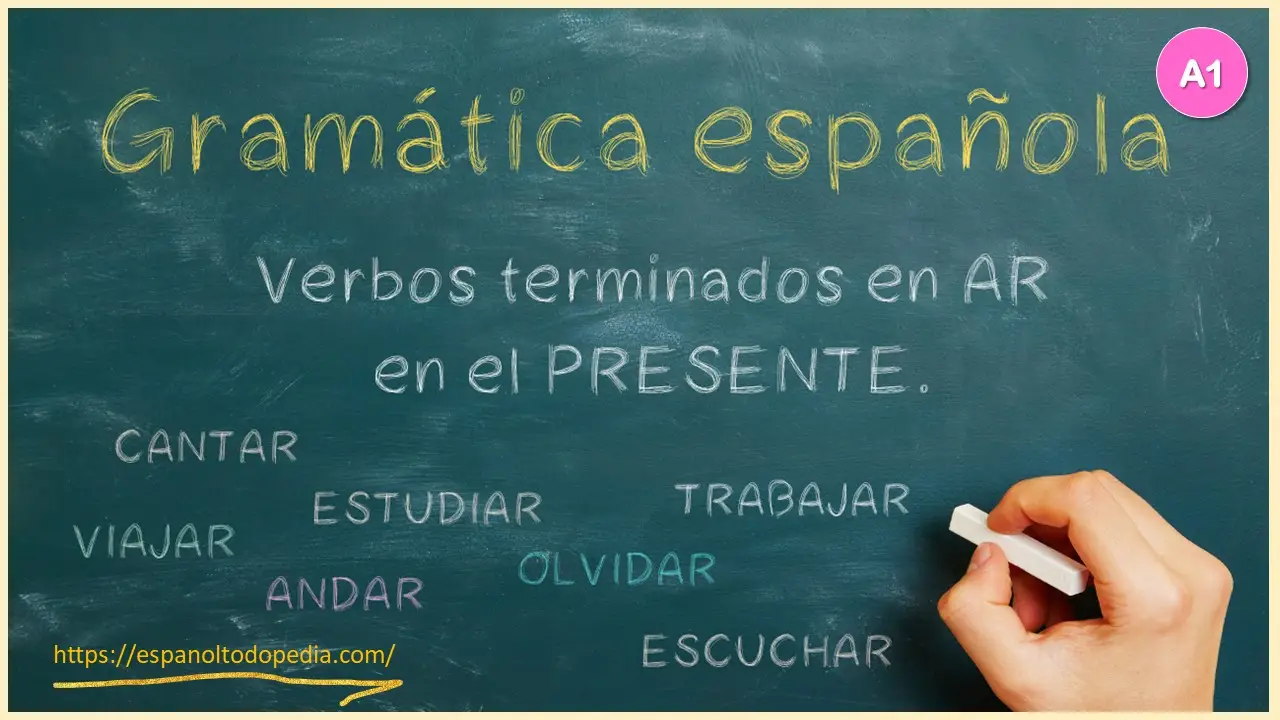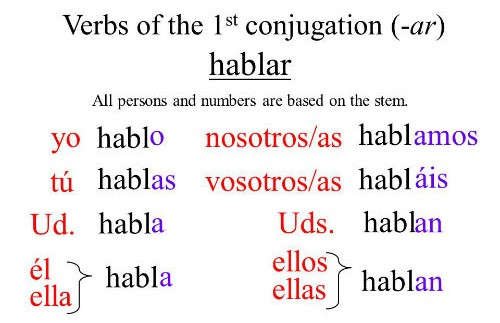


Spanish verbs are divided into three main groups according to their ending -AR, -ER or -IR. The -AR verbs are the largest category (around 80% of all), and the good news is that more of them are regular. To conjugate these verbs, remove the ending (-ar) and then add the corresponding termination according to the subject pronoun (yo, tú, él, usted...)
In this video, with explanations in English, you’ll see how to conjugate Spanish verbs ending in -AR in the present tense. Repeat the examples to familiarize yourself with the conjugation.
Here you have the conjugation of hablar (to speak, to talk) in the present tense, as an example of all the regular verbs ending in AR (click here to see the whole conjugation of hablar):

Notice that in Spanish, endings are especially important, because very often subject pronouns don’t appear along with the verbs. Look at some examples:
As we said above, there are many verbs ending in AR in Spanish as important and useful as hablar (to speak), trabajar (to work), estudiar (to study), andar (to walk), viajar (travel), desayunar (to eat breakfast), esperar (to wait, to hope), bailar (to dance), comprar (to buy), amar (to love), ayudar (to help), buscar (to look for) … Click on this link to learn 20 verbs ending in -AR with some interactive games and quizzes, that you need to know.
Click the link to access 5 interactive exercises to practice the present tense of verbs ending in -AR.
Leave us a message if you have any questions; 👩🏫our teaching team will be happy to answer them.
Para ofrecer las mejores experiencias, nosotros y nuestros socios utilizamos tecnologías como cookies para almacenar y/o acceder a la información del dispositivo. La aceptación de estas tecnologías nos permitirá a nosotros y a nuestros socios procesar datos personales como el comportamiento de navegación o identificaciones únicas (IDs) en este sitio y mostrar anuncios (no-) personalizados. No consentir o retirar el consentimiento, puede afectar negativamente a ciertas características y funciones.
Haz clic a continuación para aceptar lo anterior o realizar elecciones más detalladas. Tus elecciones se aplicarán solo en este sitio. Puedes cambiar tus ajustes en cualquier momento, incluso retirar tu consentimiento, utilizando los botones de la Política de cookies o haciendo clic en el icono de Privacidad situado en la parte inferior de la pantalla.